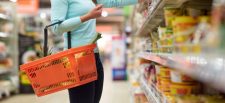The Office for National Statistics (ONS) has reported that UK inflation hit 3.6% in the year to June, with prices rising across the cake, bread and cereals categories.
The Consumer Prices Index including owner occupiers’ housing costs (CPIH) rose by 4.1% in the 12 months to June 2025, up from 4% in the 12 months to May. On a monthly basis, CPIH rose by 0.3% in June 2024, compared with a rise of 0.2% in June 2024.
The Consumer Prices Index (CPI) rose by 3.6% in the 12 months to June 2025, an increase from 3.4% in the 12 months to May. CPI rose by 0.3% in June 2025 on a monthly basis, compared with a rise of 0.1% in June 2024.
According to ONS, the 12-month inflation rate for food and non-alcoholic beverages was 4.5% in June 2025, which was the third consecutive increase in the rate. This was the highest recorded rate since February 2024, but was “well below” the peak seen in early 2023.
On a monthly basis, food and non-alcoholic beverages prices rose by 0.3% in June 2025, compared with a rise of 0.2% a year ago.
There were small upward effects to the change in the rate from three of the 11 food and non-alcoholic beverages classes, namely bread and cereals (particularly cakes), meat, and milk, cheese and eggs (mainly Cheddar cheese). These were partially offset by small downward effects from the sugar, jam, syrups, chocolate and confectionery classes (from chocolate products).
“These rising costs are gradually making their way into the prices shoppers pay at the tills.”
Balwinder Dhoot, director of sustainability and growth at the Food and Drink Federation (FDF), said: “Food and drink inflation has risen once again in June, continuing a concerning trend in 2025. Food and drink inflation has consistently outpaced the overall rate of inflation throughout the year, and seen sharp increase in the past 12 months. It was 1.5% in June 2024, up to 4.5% last month, and we expect inflation to rise further this year.
“The pressure on food and drink manufacturers continues to build. With many key ingredients like chocolate, butter, coffee, beef, and lamb, climbing in price – alongside high energy and labour expenses – these rising costs are gradually making their way into the prices shoppers pay at the tills.
“The Government’s new Food Strategy is an opportunity to create a more resilient food system. This should include looking again at the costs and regulations facing food and drink manufacturers in order to address creeping price inflation.”









